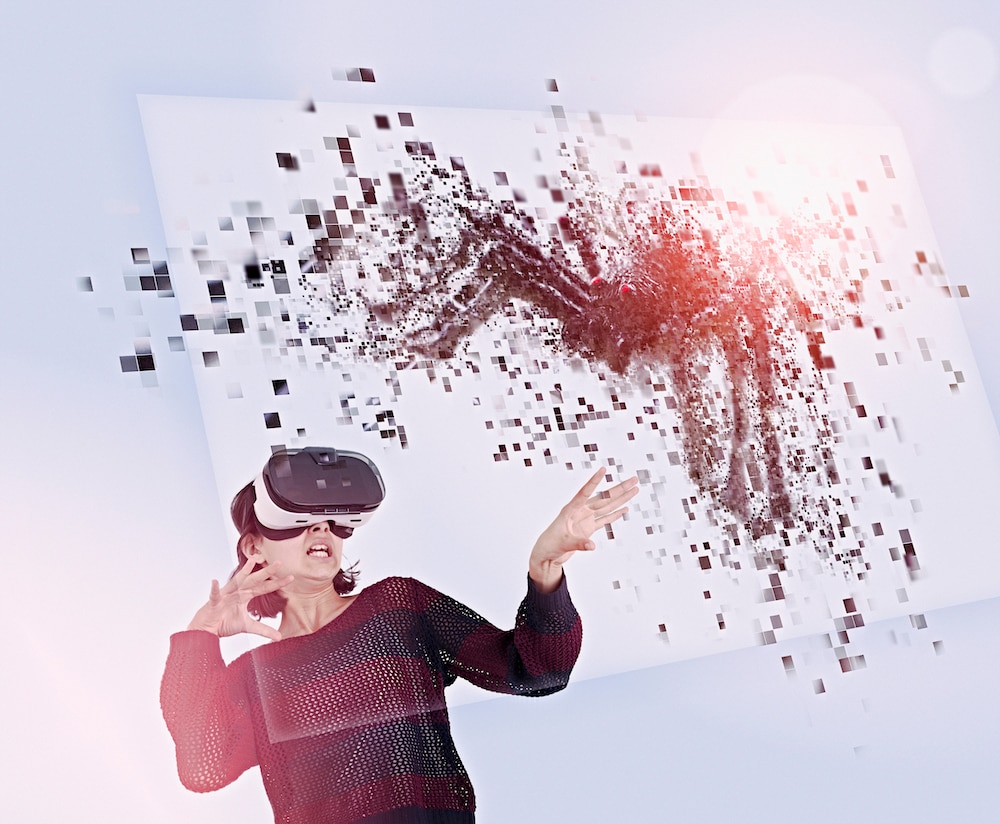Create a free profile to get unlimited access to exclusive videos, sweepstakes, and more!
Gamifying fear: VR exposure therapy shown to be effective at treating severe phobias
Technology that lets you face your fears by quite literally putting your fears on your face.

In the 2007 horror film House of Fears (now streaming on Peacock!), a group of teenagers enters the titular haunted house the night before it is set to open. Once inside, they encounter a grisly set of horrors leaving some of them dead and others terrified. For many, haunted houses are a fun way to intentionally trigger a fear response. For others, fear is something they live with on a daily basis and it’s anything but fun.
Roughly 8% of adults report a severe fear of flying; between 3 and 15% endure a fear of spiders; and between 3 and 6% have a fear of heights. Taken together, along with folks who have a fear of needles, dogs, or any number of other life-altering phobias, there’s a good chance you know someone who is living with a fear serious enough to impact their lives. You might even have such a phobia yourself.
There are, thankfully, a number of treatments a person can undergo in order to cope with a debilitating phobia. However, those treatments often require traveling someplace else and having access to medical care, something which isn’t always available or possible. With that in mind, scientists from the Department of Psychological Medicine at the University of Otago have investigated the use of virtual reality to remotely treat severe phobias with digital exposure therapy. Their findings were published in the Australian and New Zealand Journal of Psychiatry.
Prior studies into the efficacy of virtual reality for the treatment of phobias were reliant on high-end VR rigs which can be expensive and difficult to acquire for the average patient. They also focused on specific phobias. The team at the University of Otago wanted something that could reach a higher number of patients, both in terms of content and access to equipment.
They used oVRcome, a widely available smartphone app anyone can download from their phone’s app store. The app has virtual reality content related to a number of common phobias in addition to the five listed above. Moreover, because it runs on your smartphone, it can be experienced using any number of affordable VR headsets which your phone slides into.
Participants enter in their phobias and their severity on a scale and are presented with a series of virtual experiences designed to gently and progressively expose the user to their fear. The study involved 129 people between the ages of 18 and 64, all of which reported all five of the target phobias. They used oVRcome over the course of six weeks with weekly emailed questionnaires measuring their progress. Participants also had access to a clinical psychologist in the event that they experienced any adverse effects from the study.
Participants were given a baseline score measuring the severity of their phobia and were measured again at a follow up 12 weeks after the start of the program. At baseline, participants averaged a score of 28 out of 40, indicating moderate to severe symptoms. By the end of the trial, the average score was down to 7, indicating minimal symptoms. Some participants even indicated they had overcome their phobia to the extent that they felt comfortable booking a flight, scheduling a medical procedure involving needles, or capturing and releasing a spider from their home, something they weren’t comfortable doing at the start.
Part of what makes the software so effective is the diversity of programming available and the ability for an individual to tailor their experiences based on their own unique experience. Additionally, exposure therapy is coupled with additional virtual modules including relaxation, mindfulness, cognitive techniques, and psychoeducation.
The team noted that additional research is needed but that easily accessible virtual reality tools could potentially bridge the access gap for countless patients who might benefit from treatments in a safe, familiar, and controlled environment.
Of course, virtual reality exposure therapy is necessarily artificial but that’s part of the appeal, and there’s something to be said for a technology that lets you face your fears by quite literally putting your fears on your face.


























